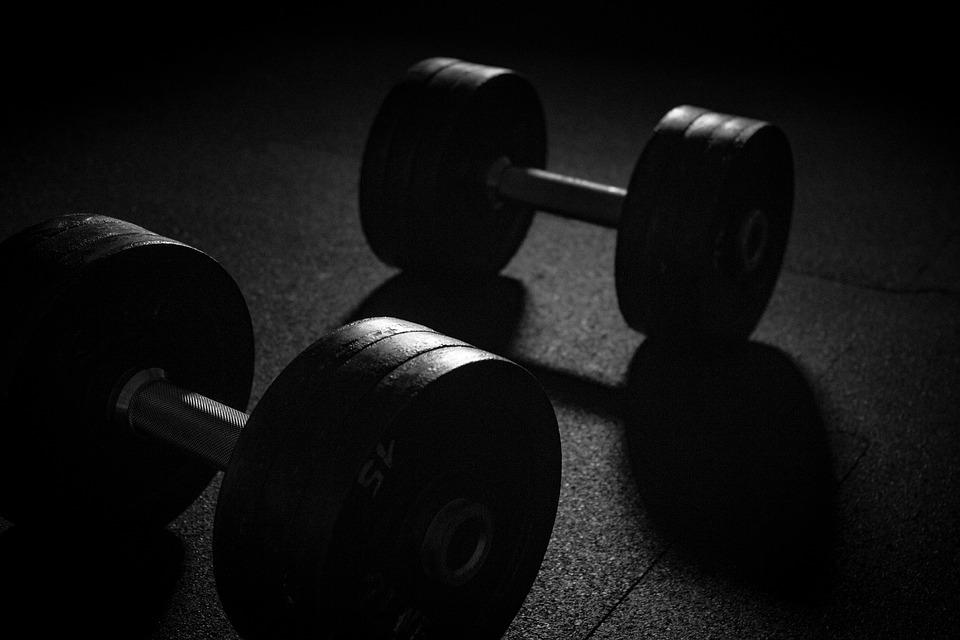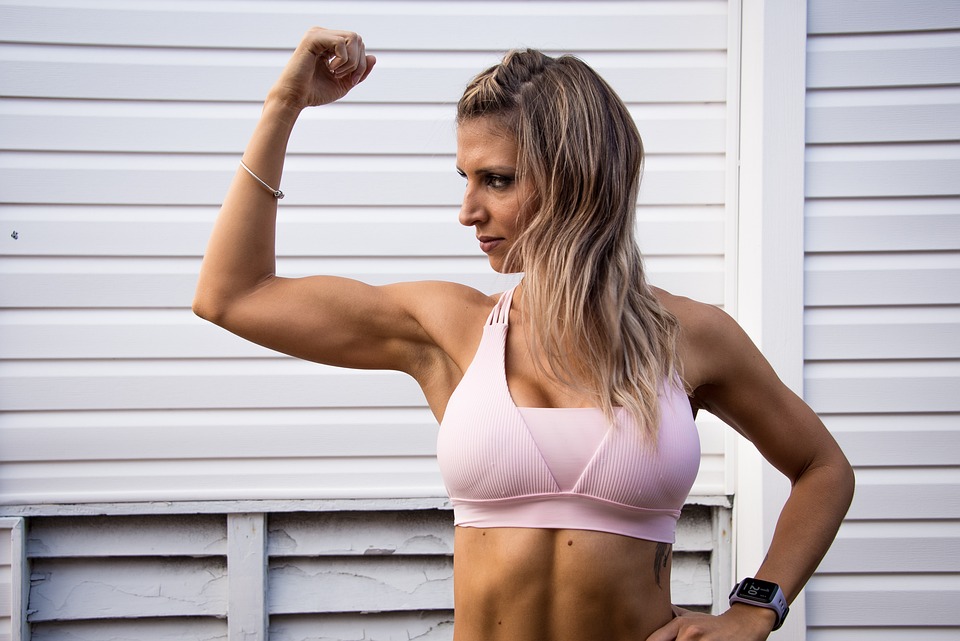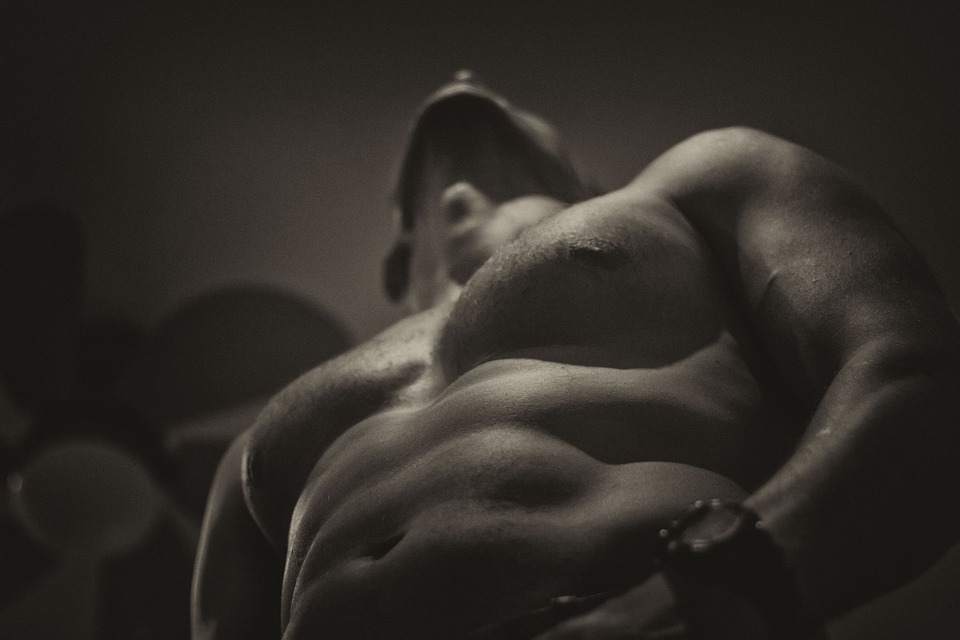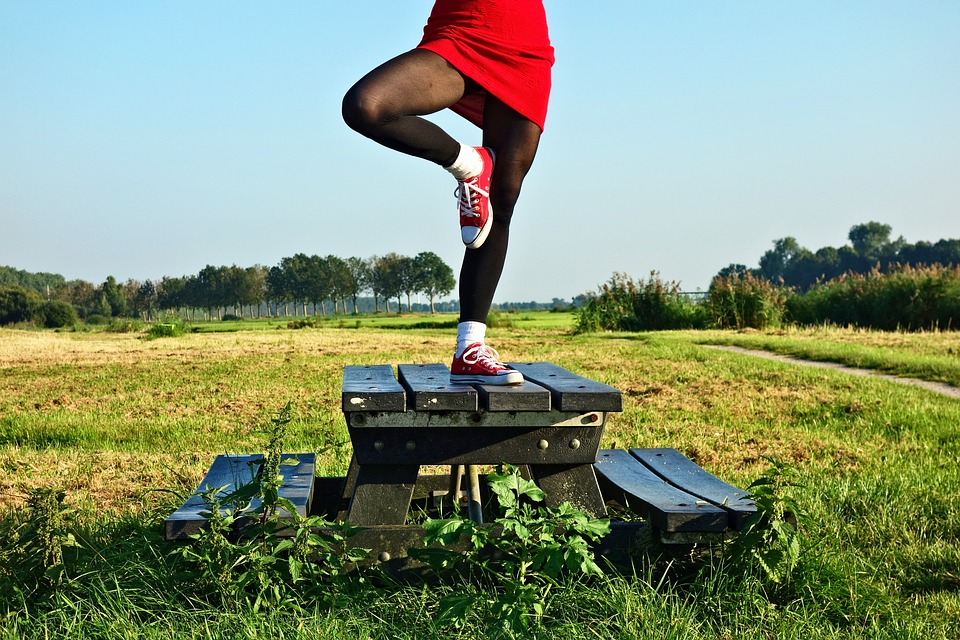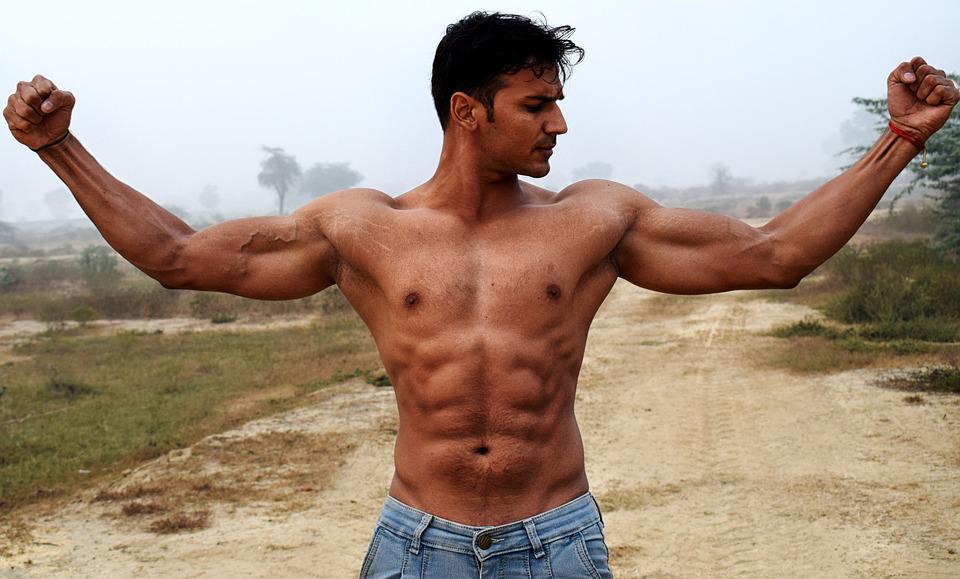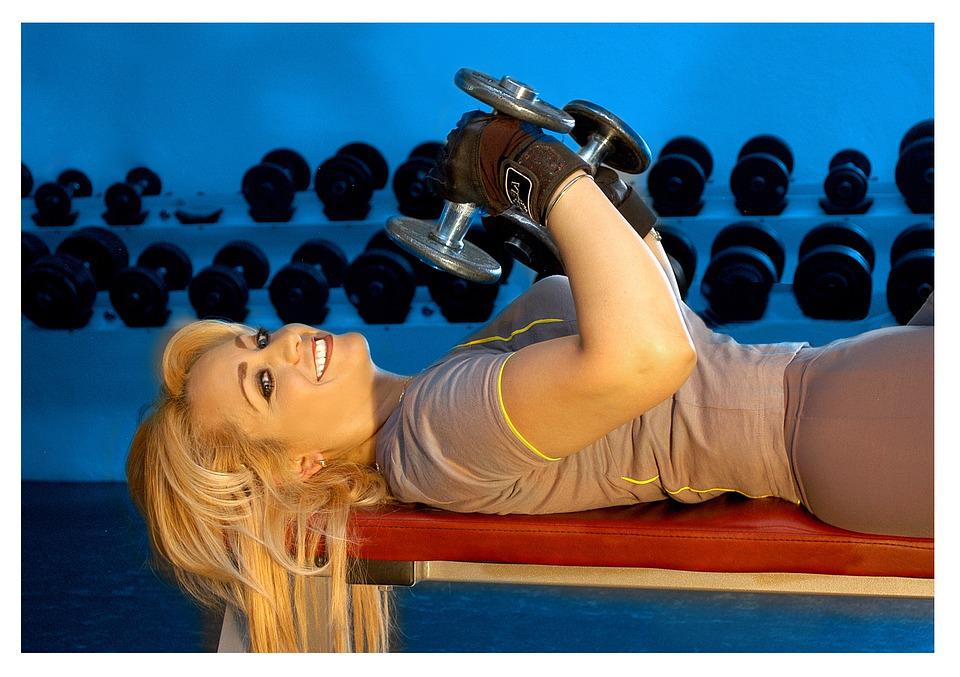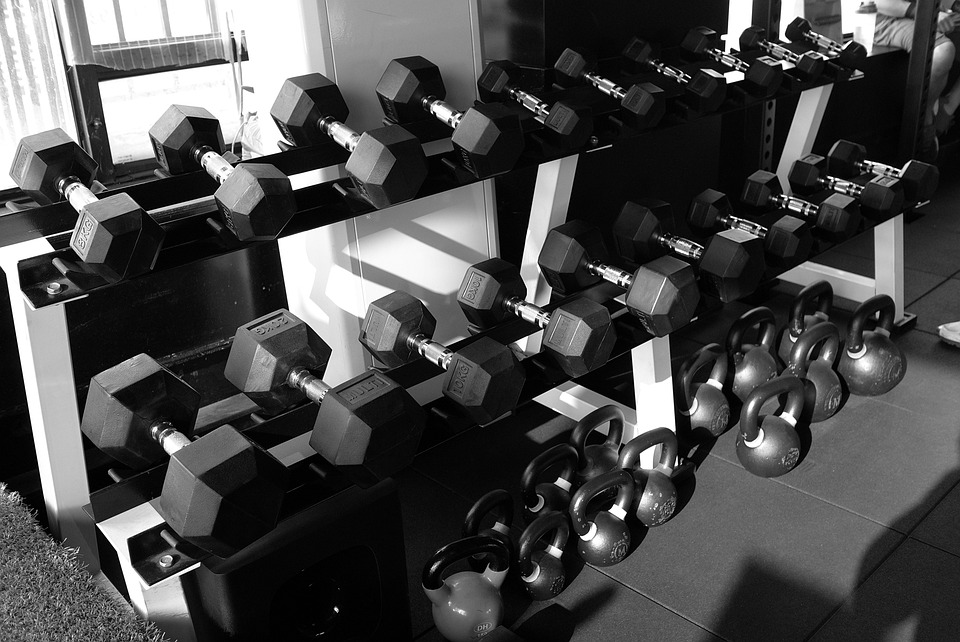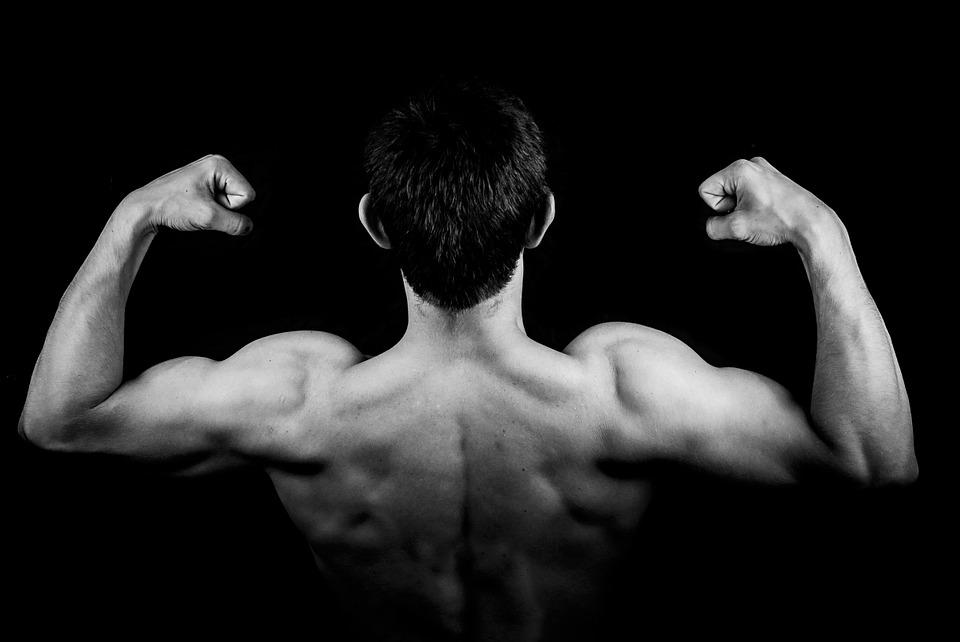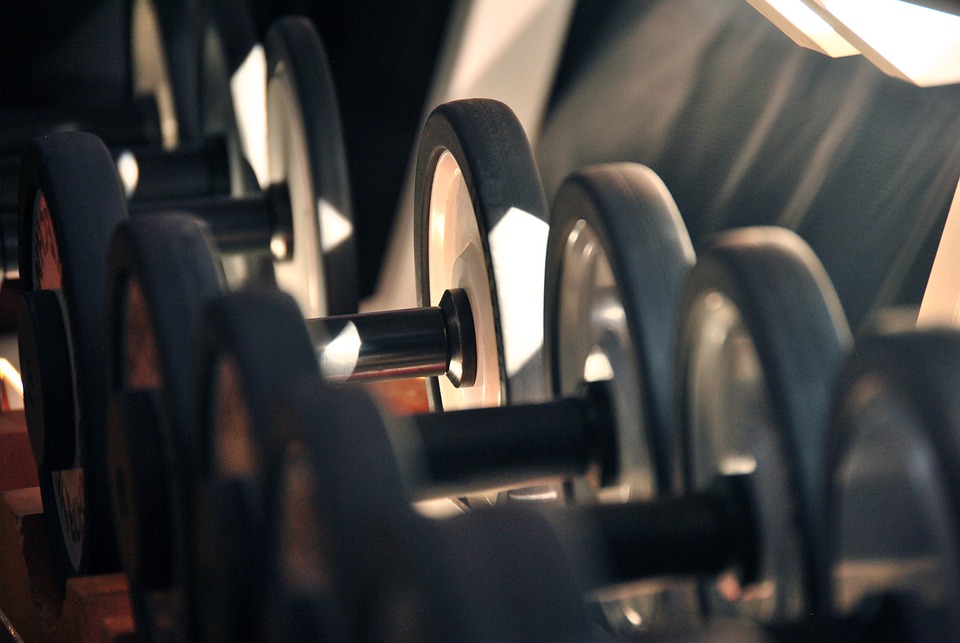
To achieve an armor-plated chest, you must be willing to put in the hard work to grow your largest chest muscle, the pectoralis major, as well as the smaller pectoralis minor. Place these muscles under strain then use the following exercises to create an excellent chest workout.
1. Cable Cross-Over: Low To High
To do this, set the machine to the lowest setting and attach a D-handle to each side. Stand with your feet shoulder-width apart and grab a handle in each hand with your palms facing up. Stand with good posture by keeping your back straight, your chest up, and your arms down at your sides. This is the starting position.
Keeping your arms slightly bent, bring both handles of the machine up and forward until your hands are at eye level. The movement should be a large scooping motion starting from your hips and going to the front of your face. Slowly pull the handles up while contracting your muscles, then return to the starting position
The upper region of the pectoralis major is the target of this exercise. You should not use heavy weight and low reps for this. If you are looking to plate your upper chest, you should start with a 10-40-pound load in each hand for 3-4 sets of 8-12 reps.
2. Cable Cross-Over: High To Low
To do this, set the machine to the highest setting and attach a D-handle to each side. Using an overhand (pronated) grip, grab a handle in each hand with your palms facing down, and stand between them with your feet shoulder-width apart. Your arms should be extended out to your sides in a “T” shape, with your elbows slightly bent. This is the starting position.
Bring both handles down and toward your belly button in a downward swooping motion until they are both in front of your hips. To complete this exercise, squeeze your pecs at the bottom and then slowly bring both handles back to shoulder level while keeping your core tight. That’s one rep.
This exercise primarily targets the lower portion of your pectoralis major muscle. Set the pulley height to midway and bring the handles to the center of your core using a neutral grip. This standard cable cross-over move further strengthens your chest.
3. Incline Dumbbell Bench Press
(For a more challenging workout, use a decline bench.) To do this exercise, set an incline bench at a 30-45-degree angle. (For a more challenging workout, you can use a decline bench.) Seated on a bench with feet flat on the floor and back and head against the bench, hold a dumbbell in each hand using an overhand grip. Raise the dumbbells until your arms are fully extended overhead. This is the starting position.
Keeping your core engaged, lower the weights to the middle of your chest before pressing them back up to the starting position. That’s one rep.
A 2016 study found that performing a press on a bench positioned at 30-45 degrees is more effective in activating the upper pecs during 20-50 percent of maximum contraction. To build your upper chest, pause during the rep and contract your chest muscles for a second, then finish the rep.
4. Dumbbell Neutral-Grip Bench Press
To perform the exercise, grab a dumbbell in each hand using a neutral grip (palms facing each other) and lie back on a flat bench. You should hold the dumbbells close together, with your arms extended up in the air over your chest. This is the starting position.
To properly execute this move, focus on contracting your pec muscles and lower the dumbbells until they just touch your chest. When they are in the starting position, press them again. That’s one rep.
The tip from the trainer is to keep the weights close to each other throughout the entire exercise. Think about pushing the weights upwards with your pecs rather than your arms.
5. Barbell Bench Press
Grasp the barbell with your hands shoulder-width apart, and arch your back so that there’s a space between your lower back and the bench. -Begin by lying back in a barbell bench press station with your feet flat on the ground and your head against the bench -Grasp the barbell with your hands shoulder-width apart, and arch your back so that there’s a space between your lower back and the bench -Start with the barbell above your chest with your arms extended -Lower the barbell down to your chest, pause, and then press the barbell back up to the starting position Your eyes should be directly below the racked bar. Place your hands slightly wider than shoulder-width apart on the bar and grip it with an overhand grip. Keeping your arms extended, lift the bar off the rack so it is directly over your chest. This is the starting position.
Lower the bar to your chest, keeping your elbows in, then push it up explosively until your arms are straight. Make sure you engage your core and don’t arch your lower back or move your chest too much when you’re performing the lift. That’s one rep.
When performing a barbell bench press with heavy weights, always have a spotter to help you. The ideal spotter is someone who is either a certified personal trainer or has extensive knowledge about working out. Having a spotter who is a fellow gym member is also beneficial.
6. Resistance Band Pull-Apart
Start by standing with your feet shoulder-width apart and your head facing forward. Using an overhand grip, hold a resistance band in front of you with your arms fully extended. Having an extra band extending beyond each hand is not a problem. This is the starting position.
Spread your arms slowly as if you’re trying to pull the band apart. Make sure your shoulder blades are close together as you do this. Continue spreading your arms until the band reaches your chest. Bring your arms slowly back together in front of you until they are at eye level. Maintain control of the stretch throughout each repetition.
A trainer’s tip is to do 3 sets of 10-15 reps as a warm-up or finisher. If you want to keep your pump going strong, you can do this move between chest exercises or sets.
14 Best Dumbbell Exercises for Building Muscle
Here’s what MH fitness editor Andrew Tracey has to say on the matter: Dumbbell exercises are more advanced than their bilateral or barbell counterparts since they call for more stabilization and activation of muscles that might otherwise be neglected or left dormant. Dumbbell exercises allow for a greater range of motion than barbell exercises, which build muscles that are more functional in everyday life.
1. Goblet Squat
Position your feet so that they are shoulder-width apart and hold a dumbbell in both hands in front of your chest. Squat down, then stand back up and repeat.
Do you want to gain weight? If you are a nervous newbie or a long-time hard gainer, you may want to gain weight. It doesn’t matter with this move. Goblet squats are a good exercise for any fitness level, according to PT Ollie Frost. The focus of these exercises is on activating the glutes muscles while also improving flexibility in the hips and chest area.
2. Arnold Press
Position yourself on a bench with dumbbells in your hands, as if you had just completed a bicep curl. Your palms should be facing your shoulders. Begin by holding a dumbbell in each hand with your palms facing your body. Push the dumbbells up over your head while rotating your arms until your palms face away from you. Straighten your arms, pause, then reverse the movement.
This potent upper-body move was invented by Schwarzenegger and hits all three sections of your deltoid, which is the muscle that caps your shoulders. This move adds thickness and width and reinforces the joint.
3. Dumbbell Clean
To perform a proper jump squat, start by flipping your wrists so they face forwards, and bring the weights up to your shoulders. As you do this, slightly jump up. Slowly straighten your legs to stand. First, lift the weights up to your chest. Then, lower the weights down to your thigh before moving into a squat position and repeating.
The reason for this is that if you want to have the physiques of an Olympian, you must train as if you are one. Frost states that adding powerlifter lifts to your workout routine will not only help you build lean muscle but also gain explosive power. This exercise also helps to increase blood flow to your glutes, hamstrings, shoulders, and arms to help improve muscle growth.
4. Renegade Row
To do a press-up with dumbbells, start in a press-up position with your hands on the handles of two dumbbells. Keeping your core tensed, pull the right dumbbell up to your abs then return to the start position. Repeat with the left dumbbell to complete one rep.
This exercise will help you build a strong back, ignite your abs, and develop anti-rotational core strength. It may be tempting to focus on the ‘row’ aspect of the movement, but the key to getting the most out of it is to make sure your plank positioning is correct.
5. Farmers’ Walk
How: Walk forward taking short, quick steps. Go for the given distance, as fast as possible.
The reason why there are no sophisticated form rules to worry about is that you always need to brace your core. You will increase your grip strength significantly, which is a significant advantage. Possible paraphrase: This move also strengthens your rotator cuffs, which helps protect your shoulders from injury during other, more strenuous lifts.
6. Flat Dumbbell Flye
To do this exercise, lie down on a flat bench and hold two dumbbells at your shoulders with your palms facing inwards. Lift the dumbbells until your arms are almost fully extended. This is your starting position. Starting from this position, slowly lower the weights to your sides while keeping your arms bent, until you feel a stretch across your chest. Pull the weights back to the starting position by contracting your chest muscles.
This move is better than the bench press for stimulating the chest muscle fibers that spark growth. You don’t need anywhere near as heavy weights to do it. Just make sure you don’t extend your arms too much or the load will be transferred from your chest muscles to your elbow joints.
7. Bent-Over Row
To do a proper rowing exercise, keep your core tight and your back straight as you row the weights up to your chest. Lower and repeat.
Frost says that rows target several muscles in your upper body, including the traps, rhomboids, lats, and biceps, which is perfect for getting you the desired ‘V’ shape. It will also work on your deltoids to give you some muscular shoulders.
8. Dumbbell Uppercut
Stand while holding two dumbbells at your shoulders with your palms facing your body. Get into a fighting stance and throw a right uppercut, turning your right foot as you do it. Start again from the beginning, this time on the other side.
The reason this move will help you raise your heart rate so quickly is that it is very intense and will get your heart pumping faster than you can say the word ‘knockout’. In addition to providing a great cardio workout, it also builds strength and power. While it is important to have strong firearms, you should also focus on your boxing stance and posture. It’s the key to a killer uppercut.
9. Two-Arm Dumbbell Stiff Legged Deadlift
To do this exercise, lower the dumbbells to your feet, extending through your waist. Return to the starting position slowly.
The reason this exercise is beneficial is that it works the fast-twitch muscles in your lower body, which results in stronger legs. Preventing hip and lower back injuries is one of the benefits of stiff-legged deadlifts, according to Frost. This is one of the best exercises you can do with free weights to build your lower body without risk of injury.
10. Dumbbell Kickbacks
To perform this exercise, start by holding a dumbbell in your right hand. Place your left knee and left hand on a bench for support. Raise your arm so that it is parallel to the floor with your dumbbell close to your chest. Using your forearm, straighten your arm behind you. Return slowly to the start position and repeat.
Yep, us too. – Do you often neglect your triceps when working out? Many people do. Yeah, we thought as much. While they might not be the “mirror muscles,” strong triceps are still essential for any effective upper-body training routine– especially for your chest and shoulders. [This move] focuses on the lateral head of the triceps, which is the most visible of the three heads, in order to build bigger, more defined arms.
11. One Arm Swing
To do the move: -Sink into a squat -Swing the dumbbell through your legs -Immediately drive yourself forward -Bring the weight up towards your head as you straighten your legs Repeat this movement, then swap sides.
The swing will help you build muscles in your back, grip, coordination, legs, and shoulders. This means that it will help you to continue working out and improve your body’s transformation. Most traditional kettlebell moves can be replicated.
12. Dumbbell Bench Press
To do this exercise, lie on a flat bench holding two dumbbells over your chest with an overhand grip. Start with your arms extended, then lower yourself until your arms are at a ninety-degree angle.
The reason to choose dumbbells over a barbell when exercising to build pecs appeal is that dumbbells provide a better range of motion. Why? A weight in each hand allows you to stretch your chest muscles more at the bottom of the lift, which will help you build a bigger chest. And if you want to take this move further? Frost says to squeeze your pecs together at the top of the lift to recruit as many muscle fibers as possible.
13. Dumbbell Shoulder Press
Stand with your feet shoulder-width apart and hold two dumbbells at shoulder height, one in each hand, with an overhand grip. Raise the weights above your head until your arms are straight. Return slowly to the start position.
Why: You want boulder shoulders, right? This move is important for increasing strength, size, and power. With an upright posture, you engage your abdominal muscles, which provides more stability. Keep your core engaged to maintain a flat back and protect your spine throughout the range of motion.
14. Cross Body Hammer Curl
Pause and slowly lower your back to the starting position To perform this exercise, lift one weight at a time to your opposite shoulder, pausing briefly before lowering it back to the starting position. After completing the prescribed number of repetitions on one side, switch and repeat the specified number of times on the other side.
Why: To win the arms race, divide and conquer. When you focus on working one arm at a time, it creates a large neural drive. This means that your nervous system is working to recruit more muscle fibers.

